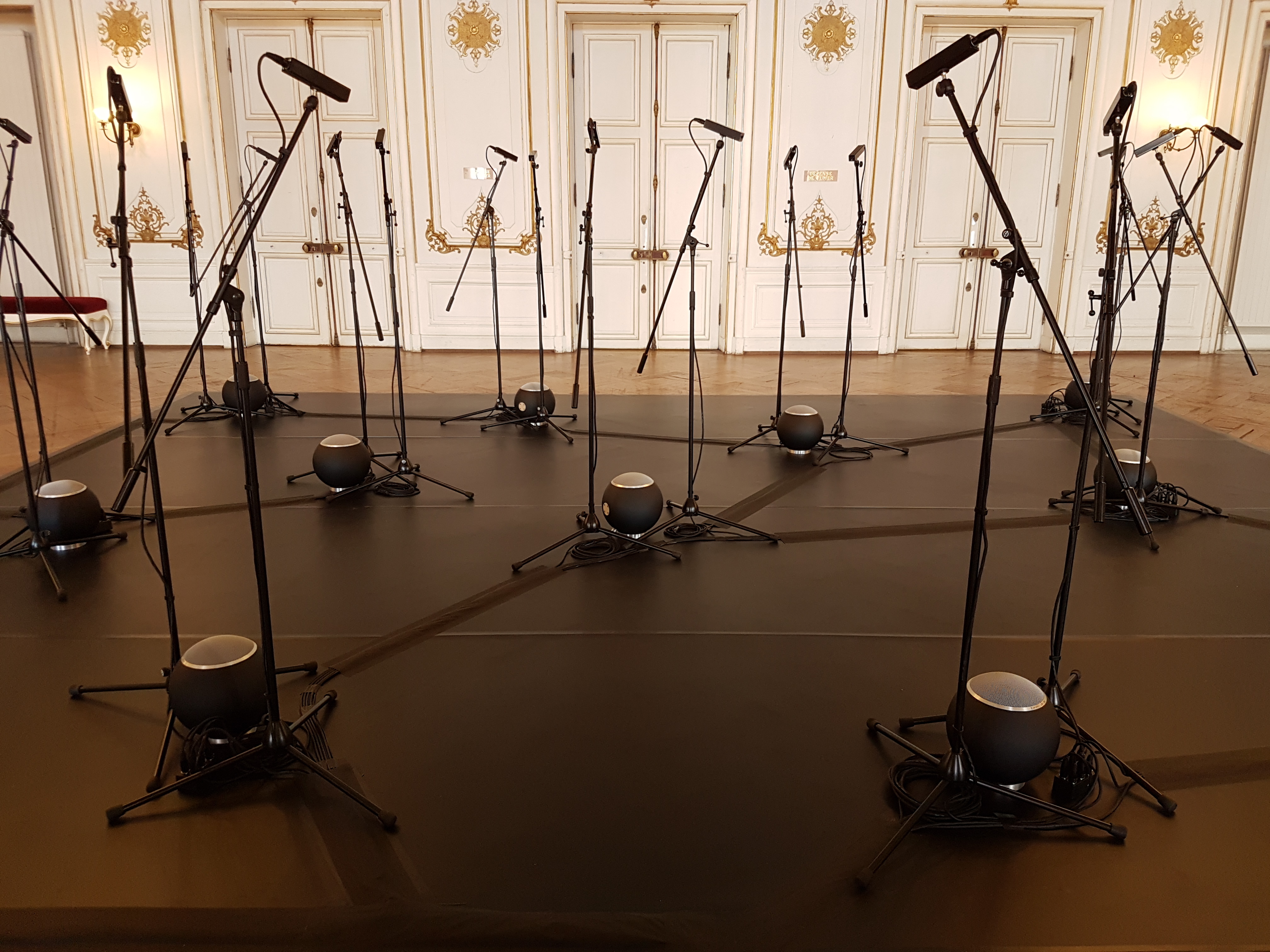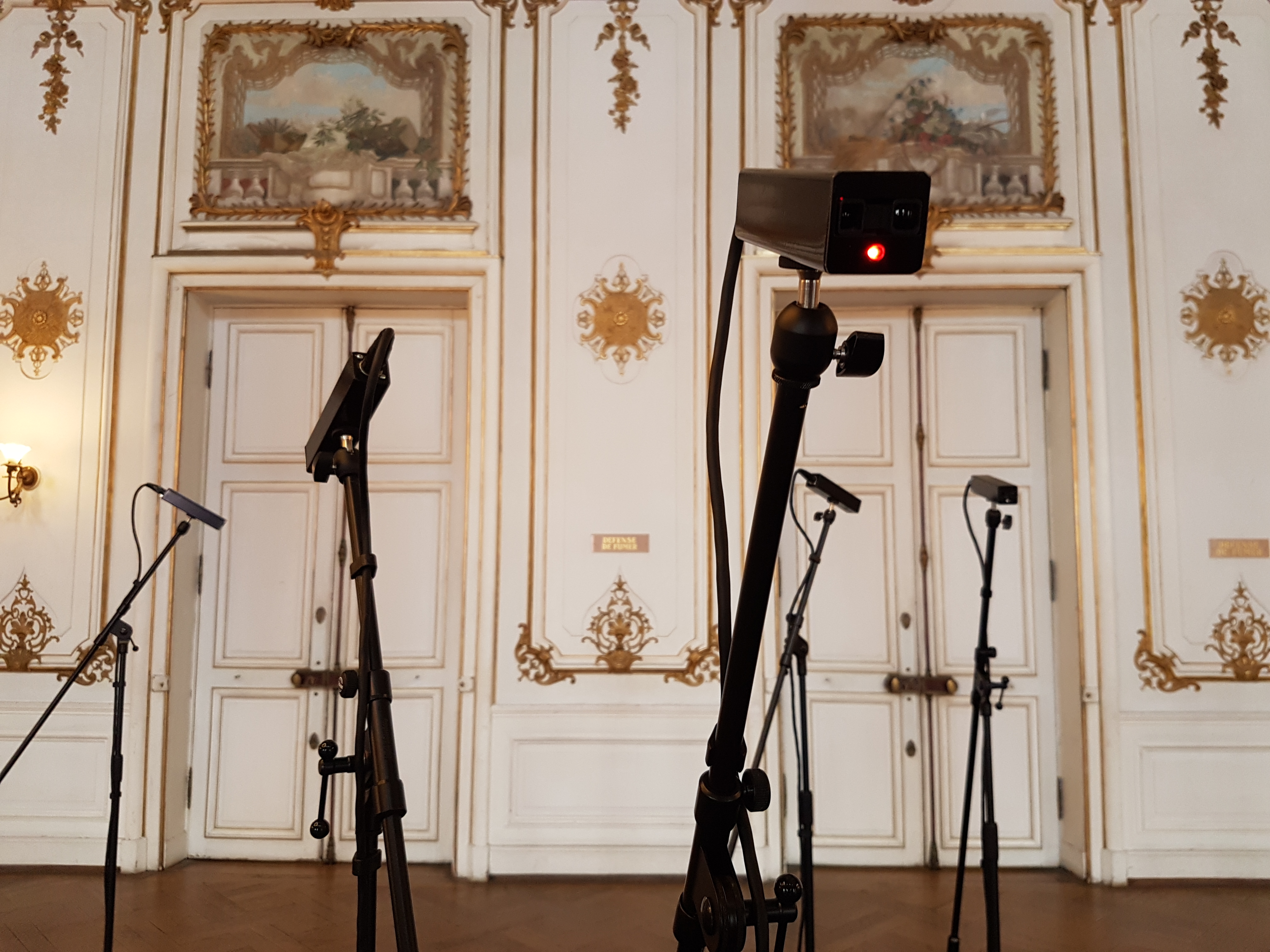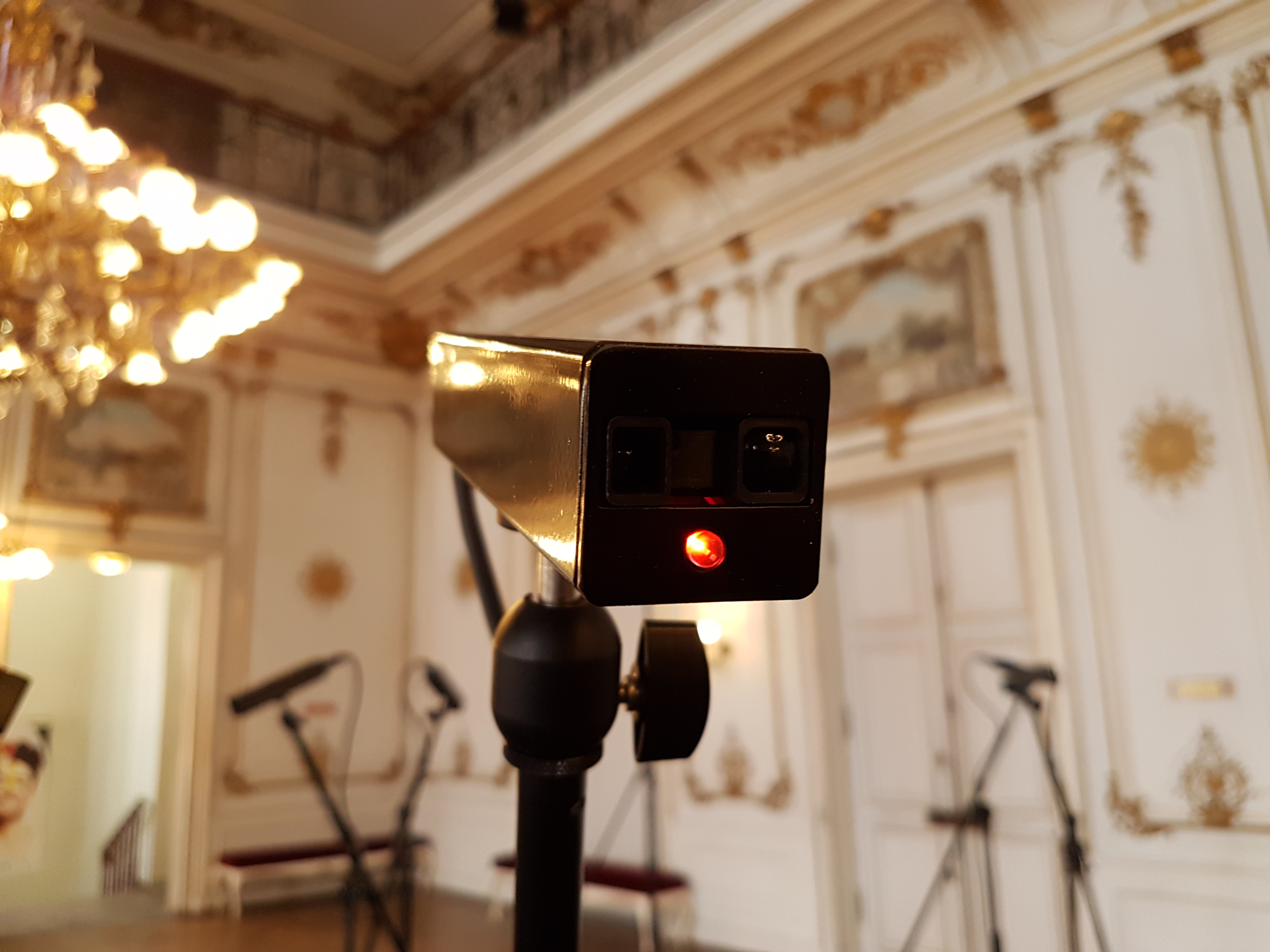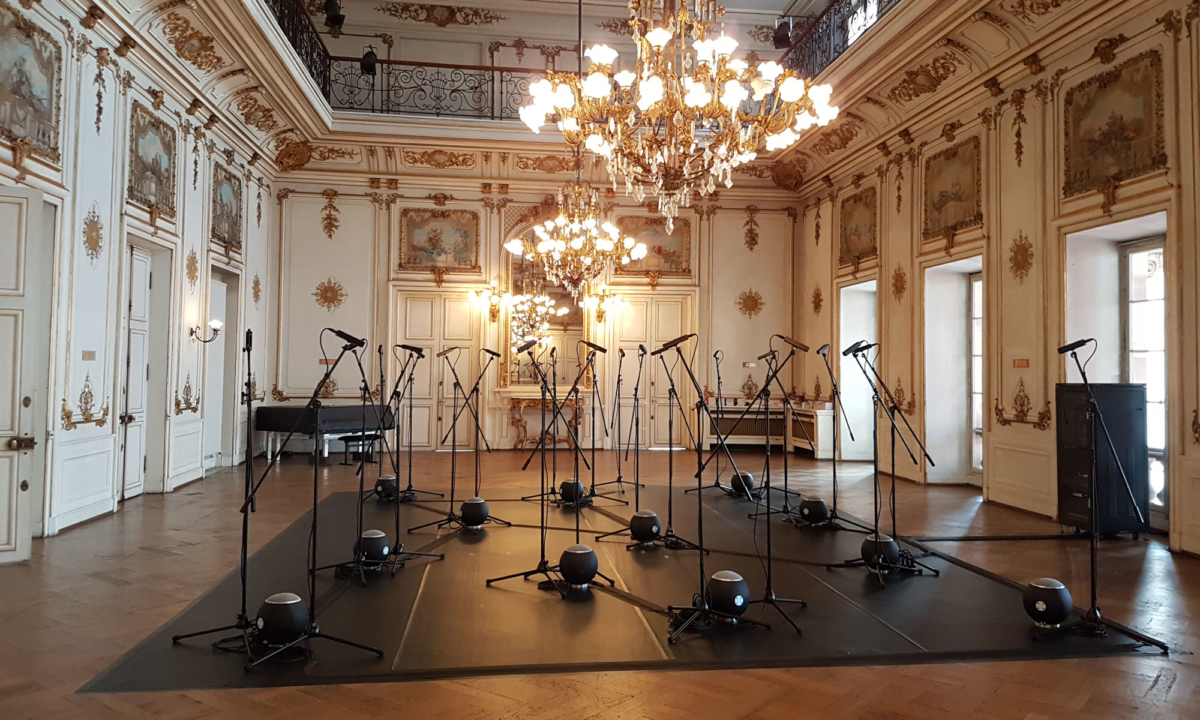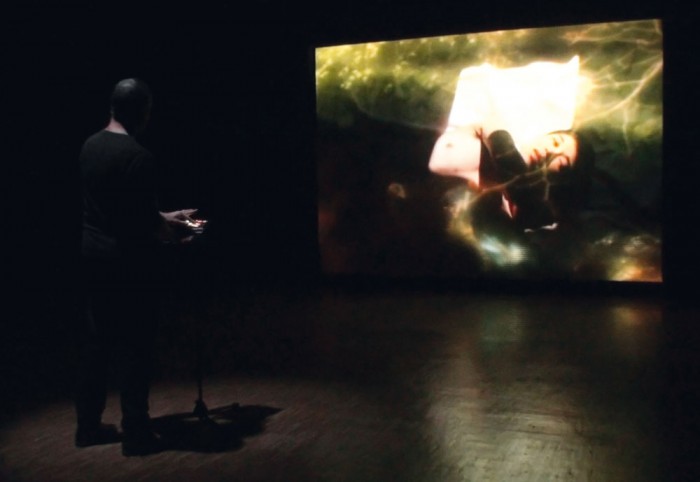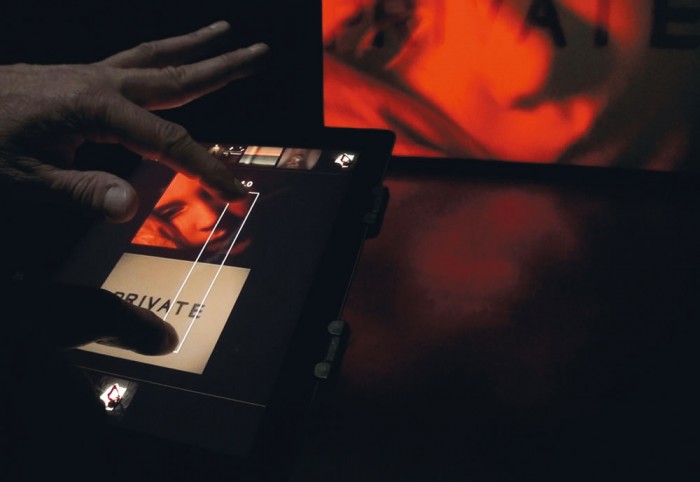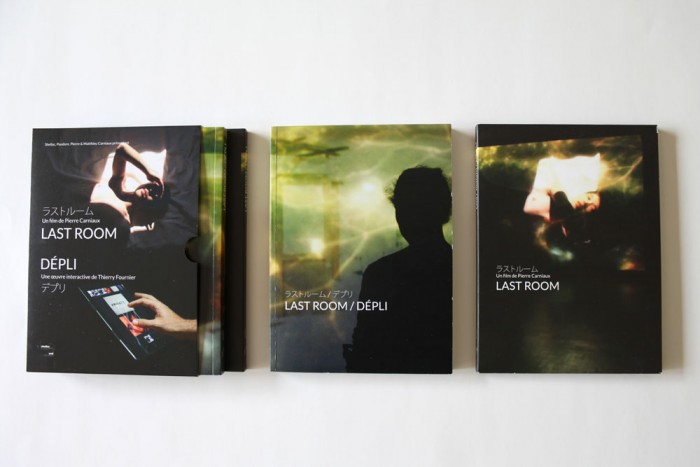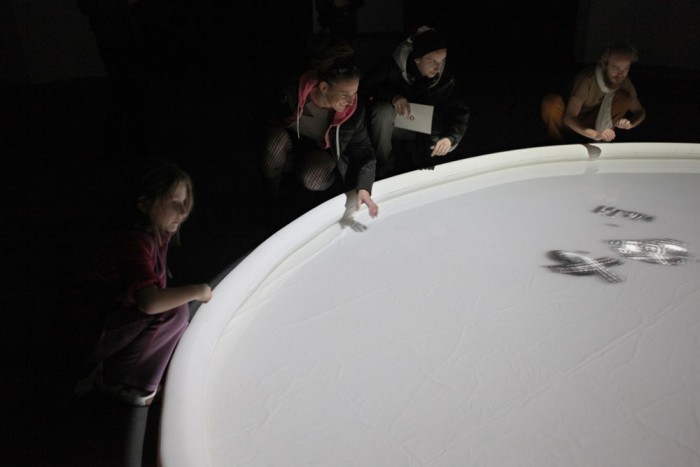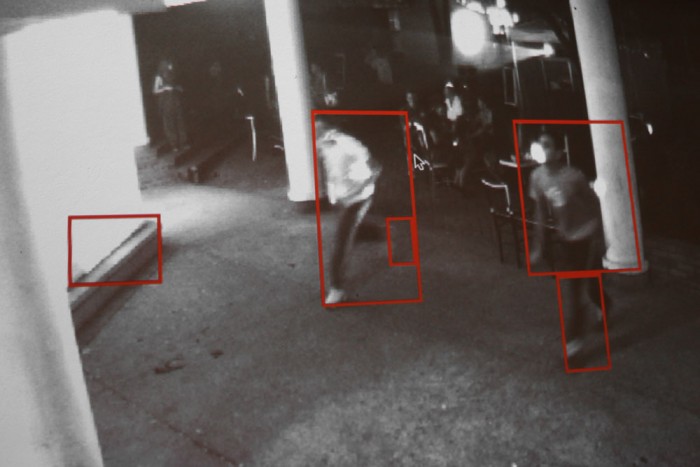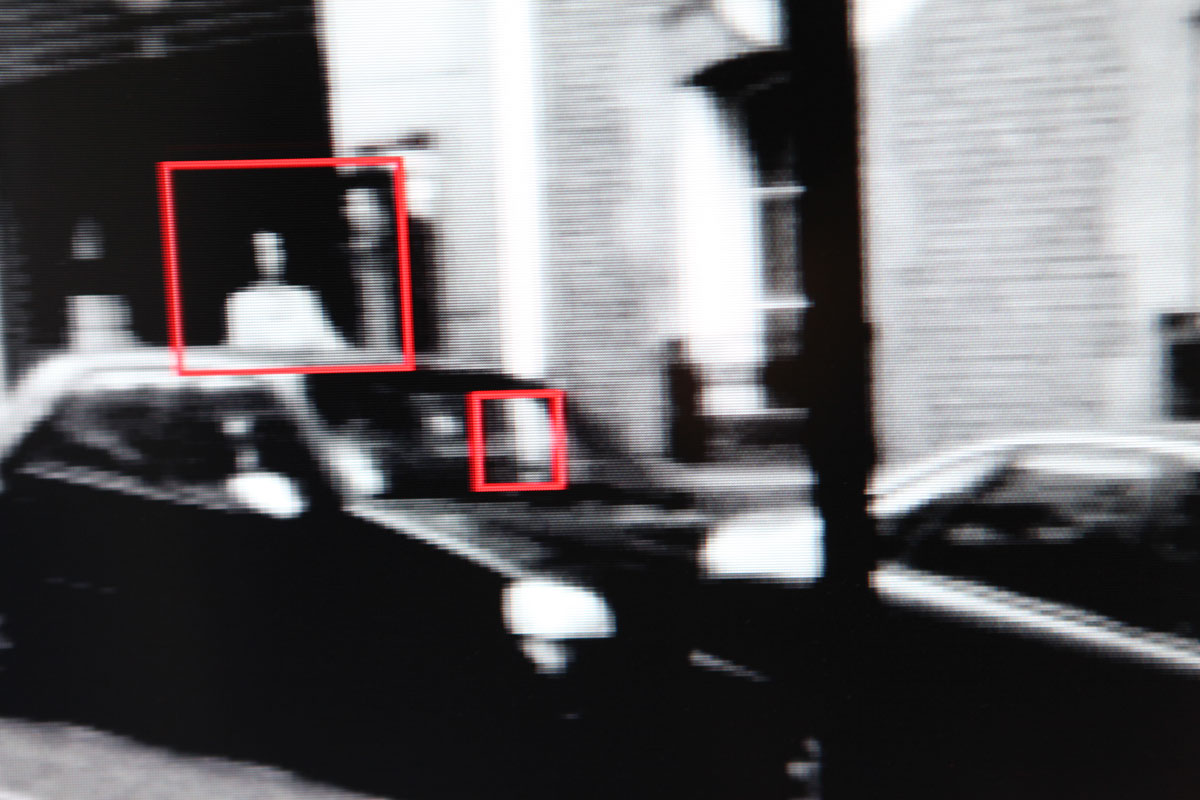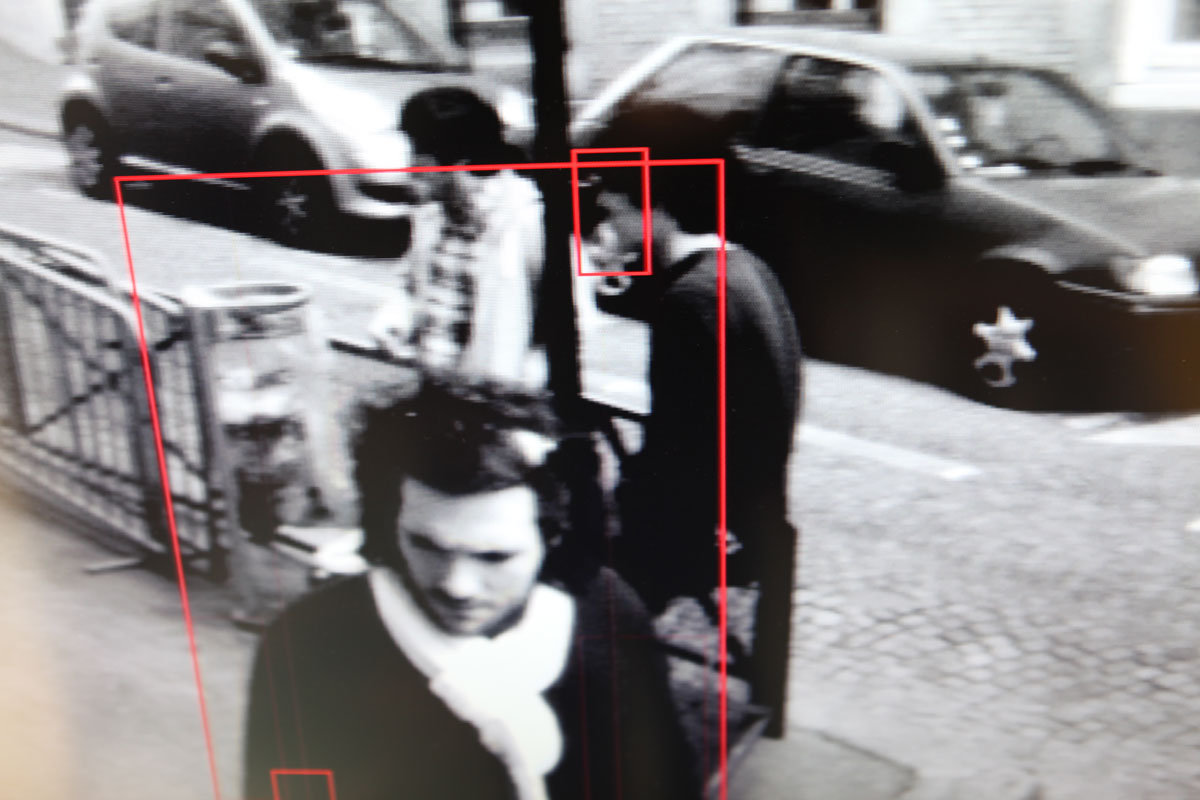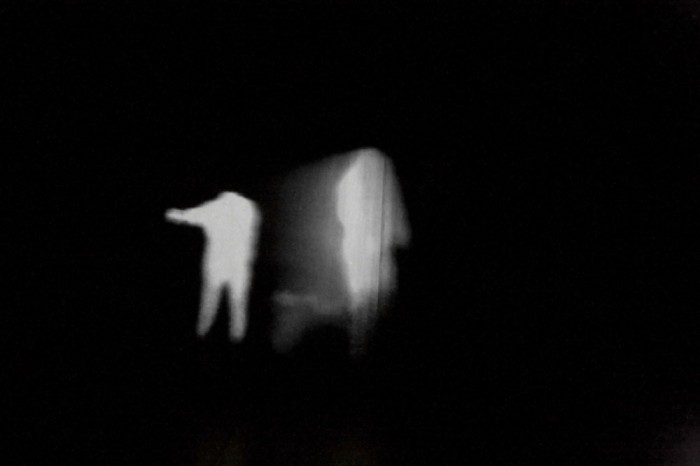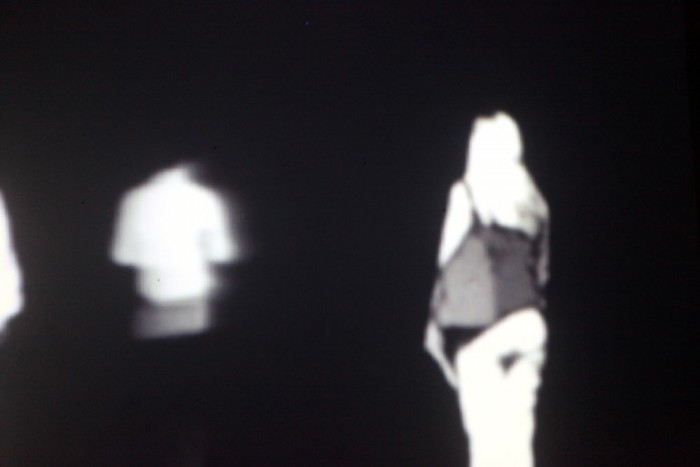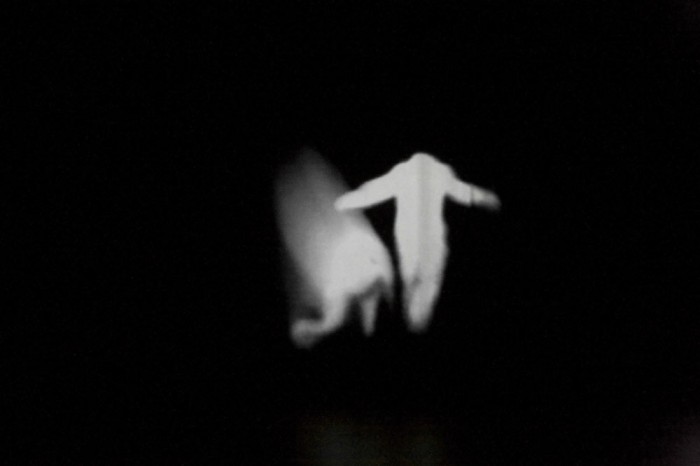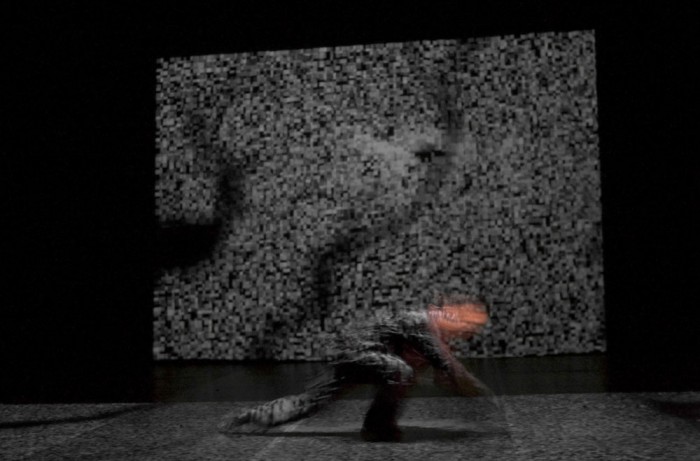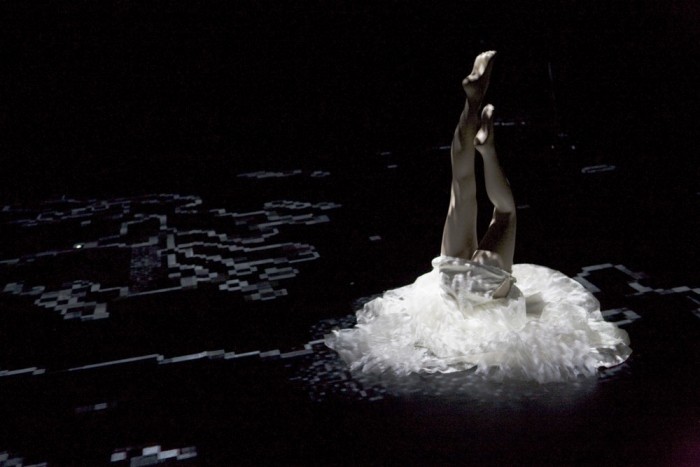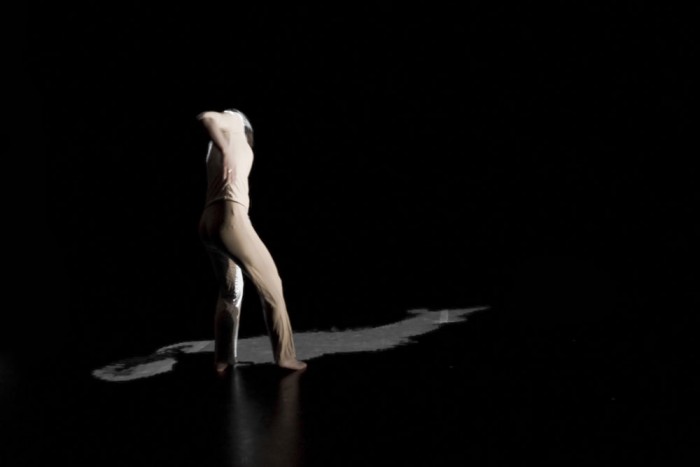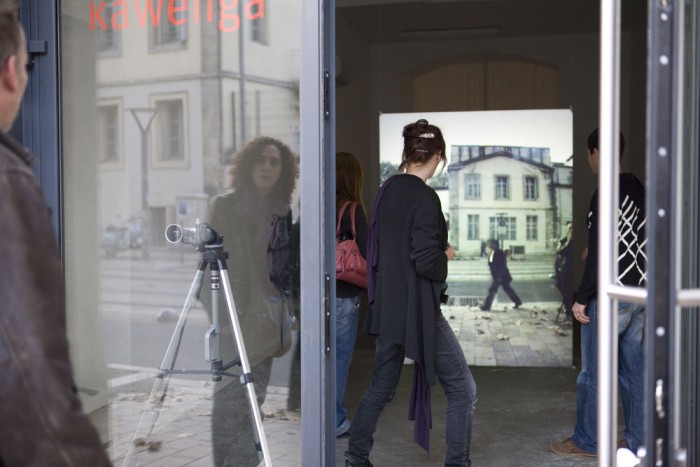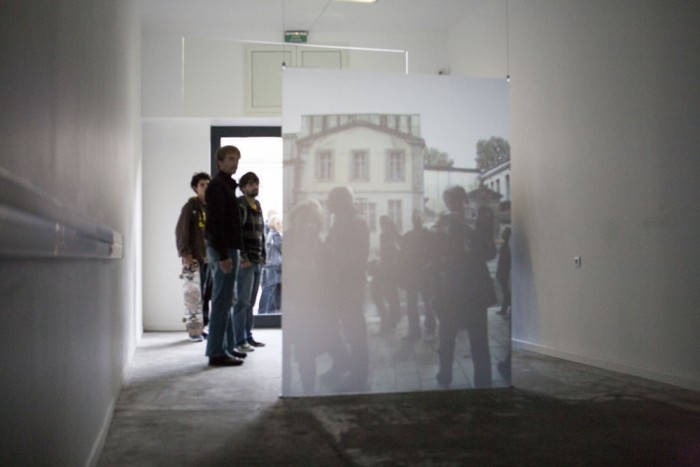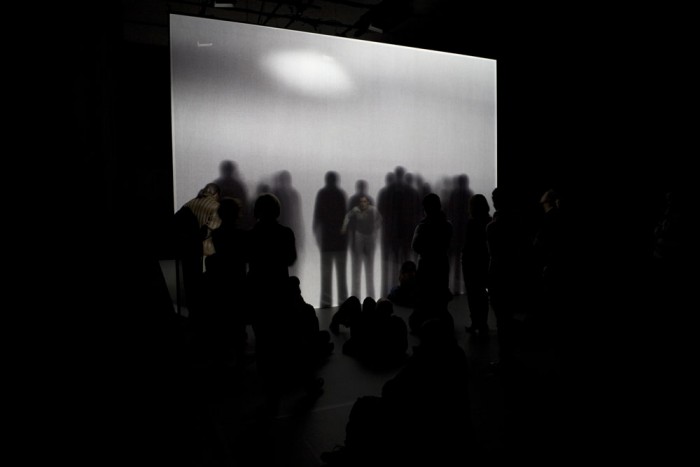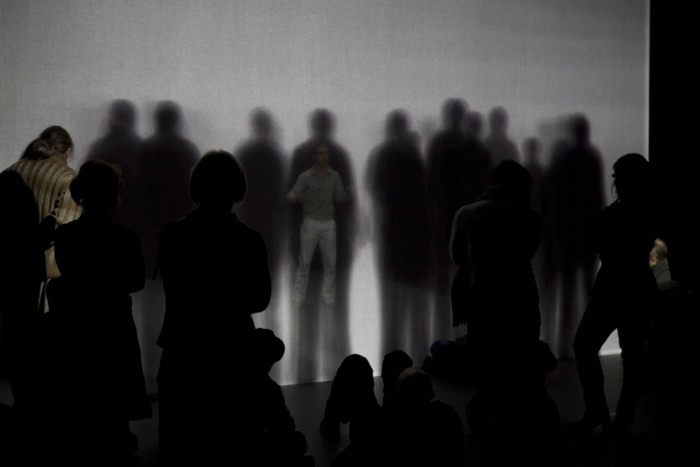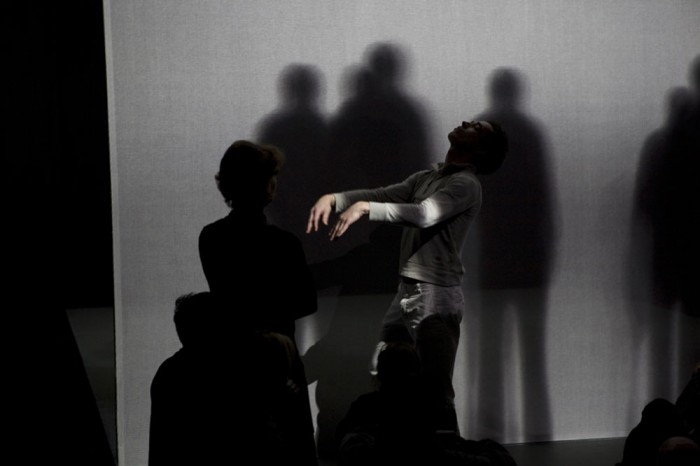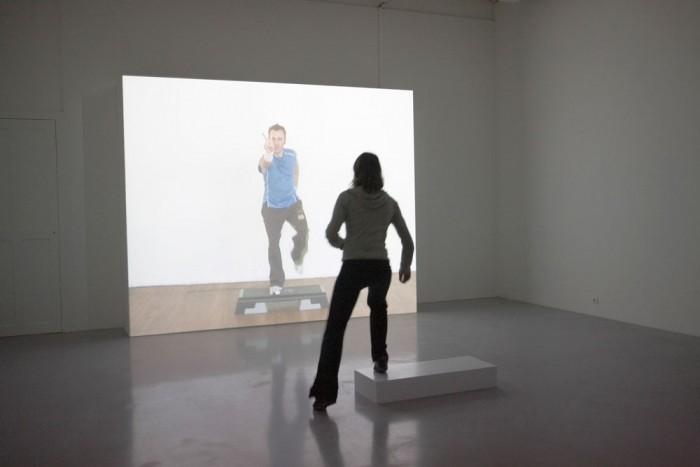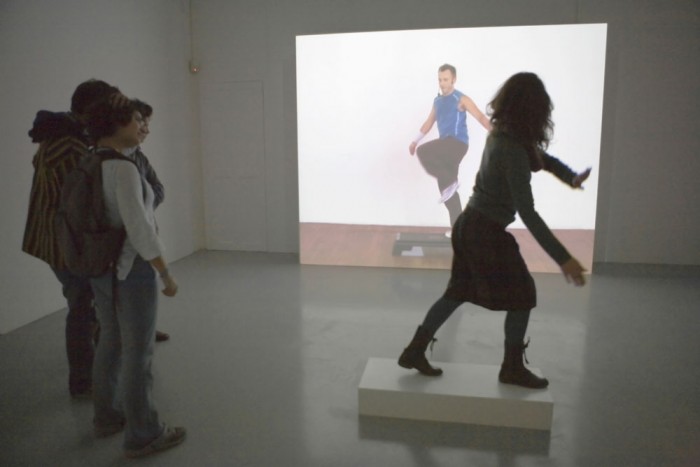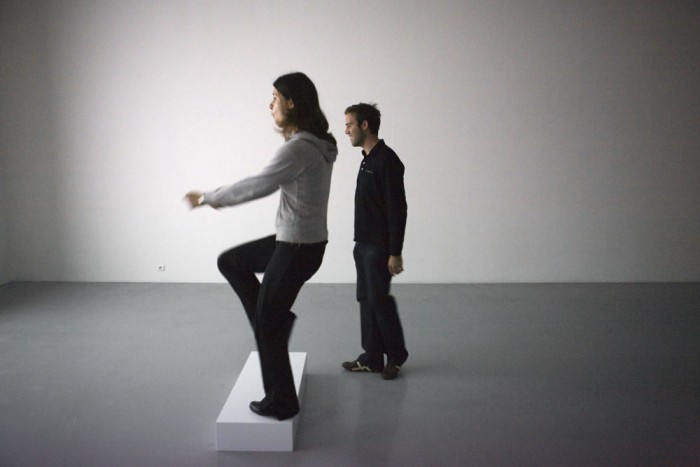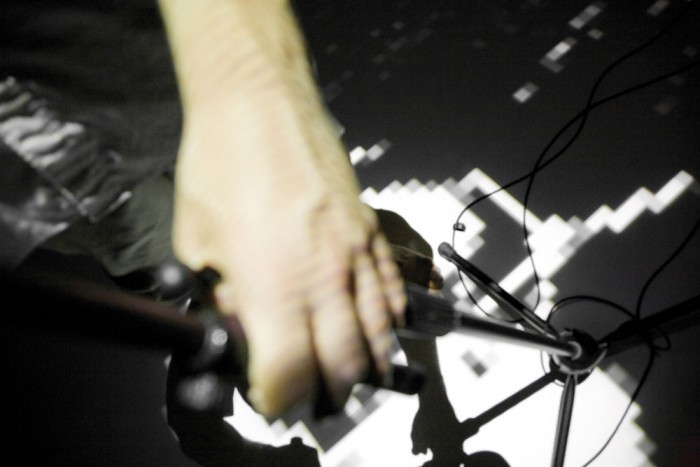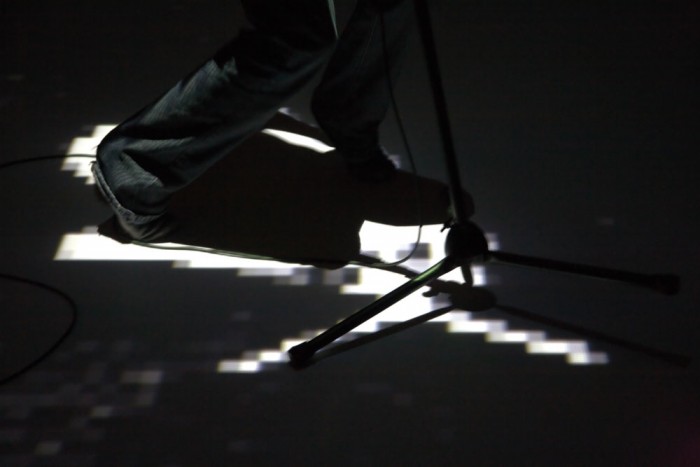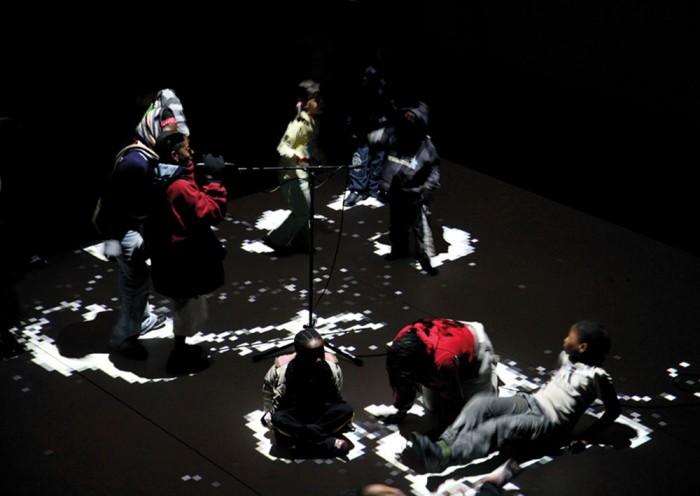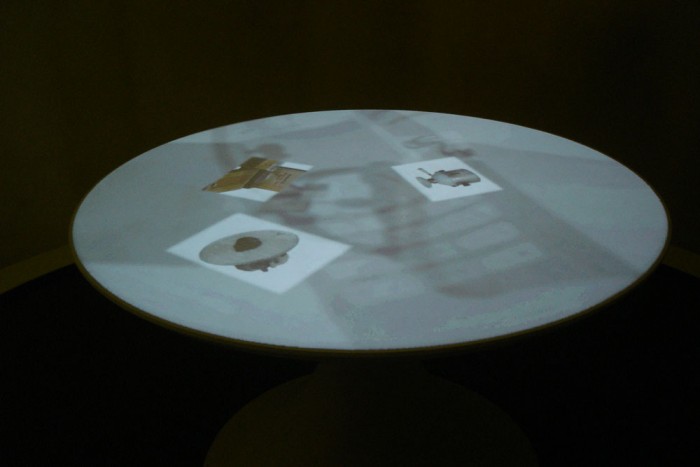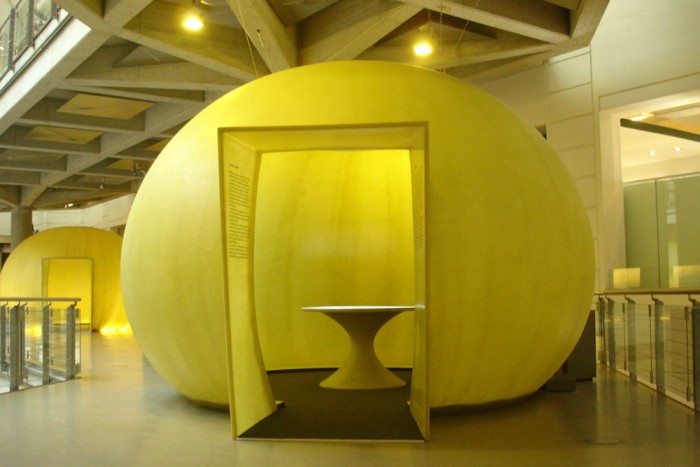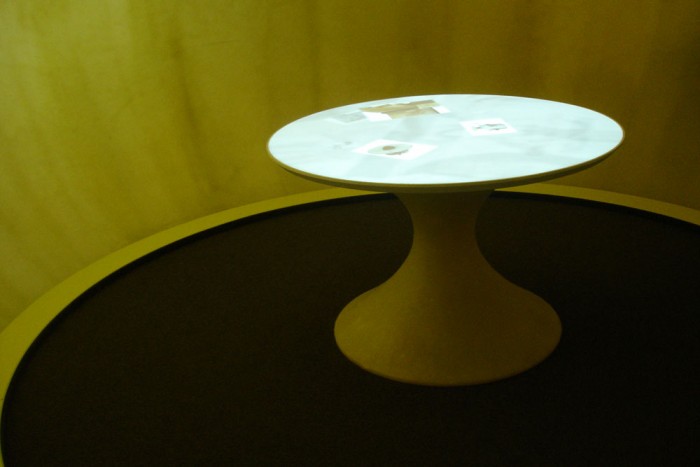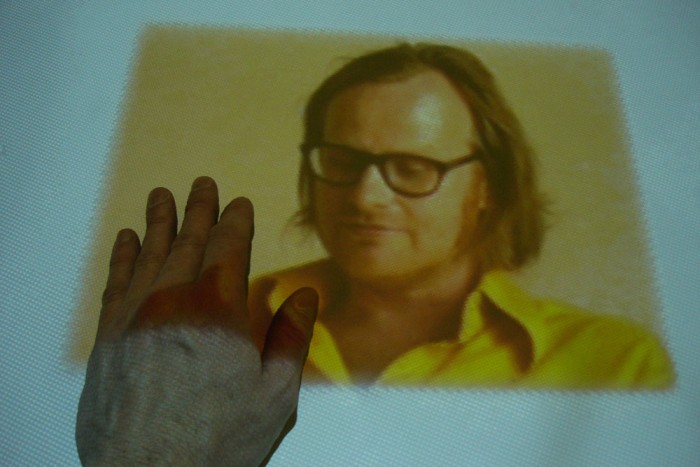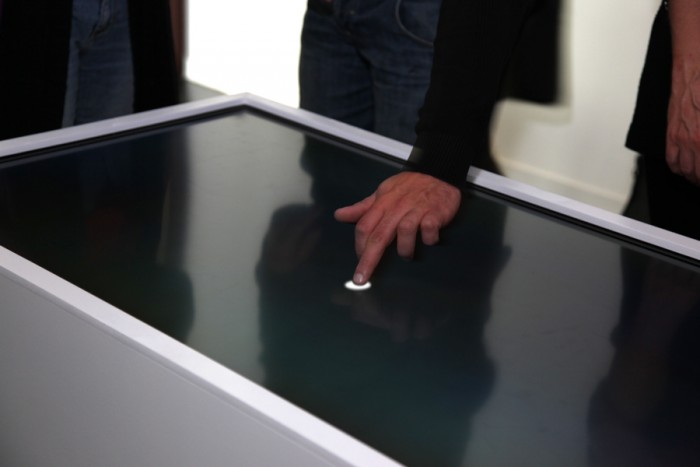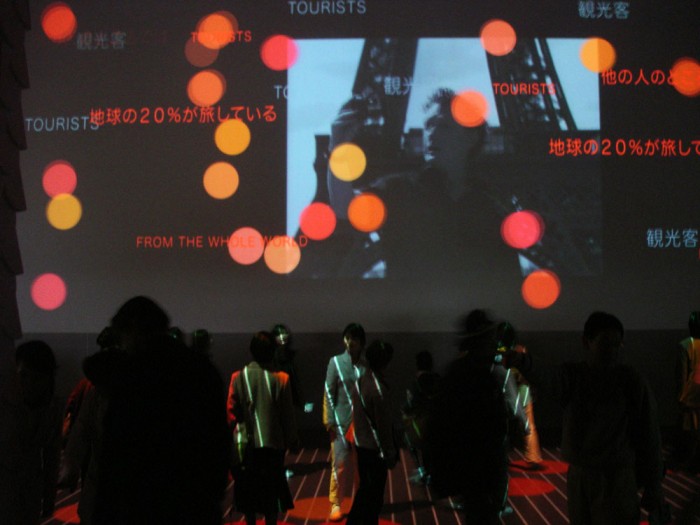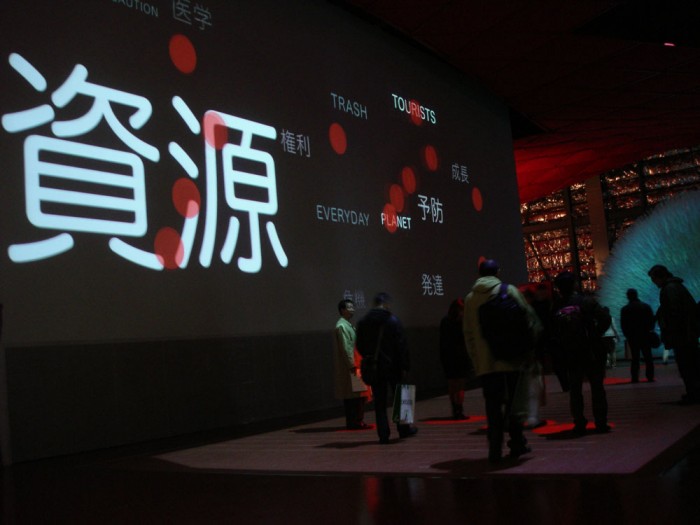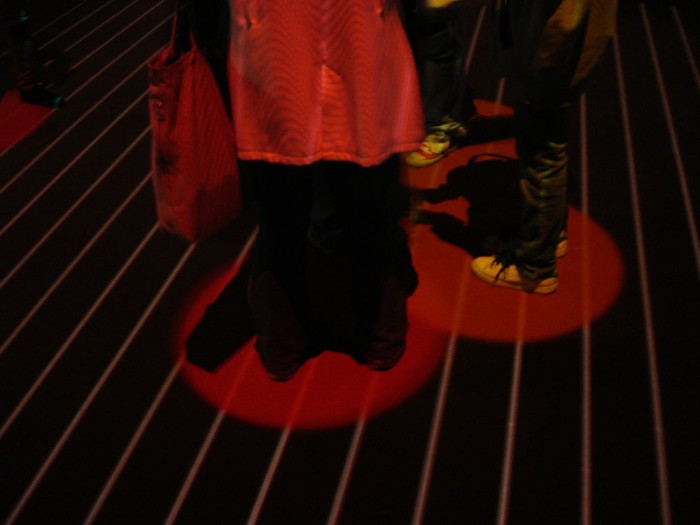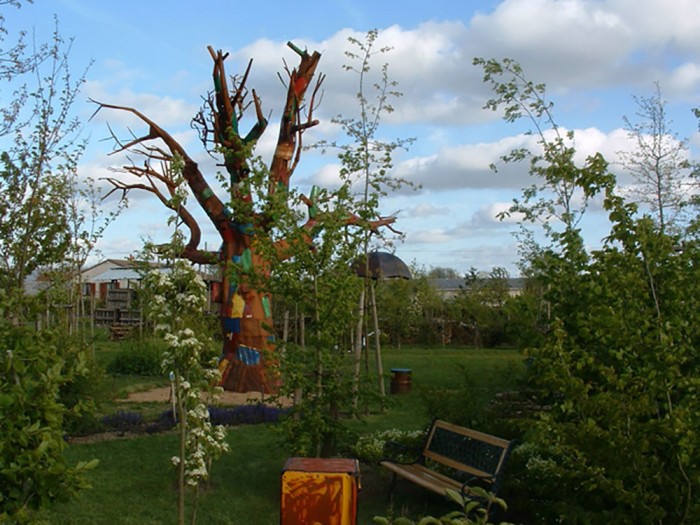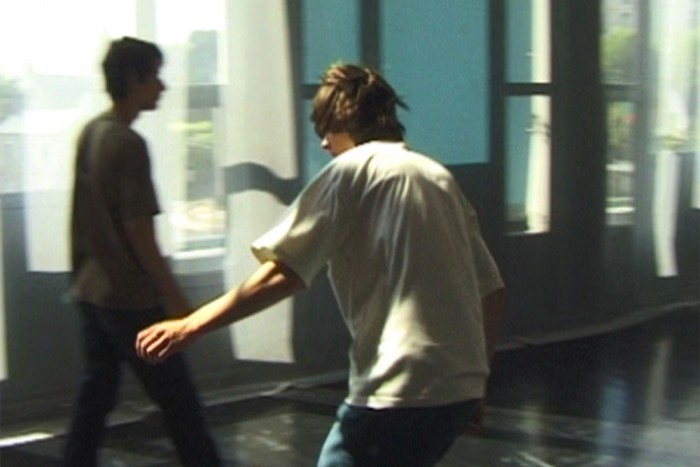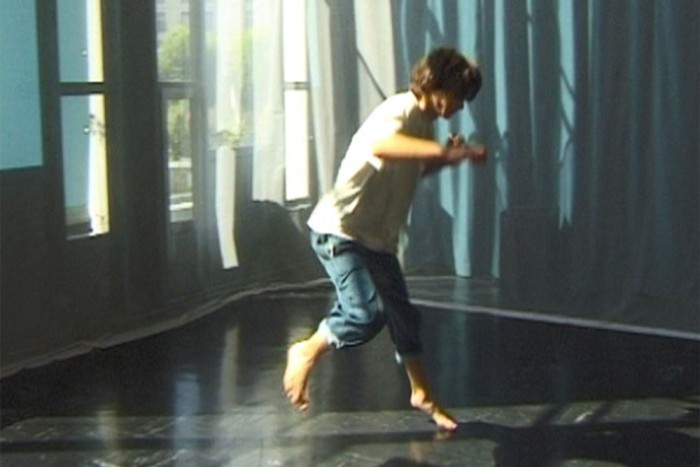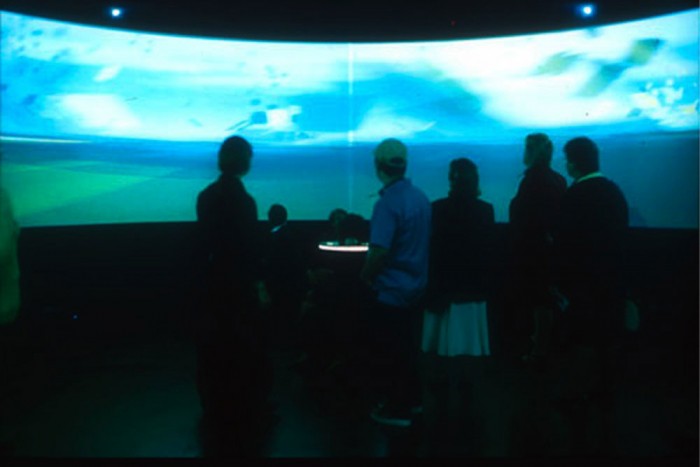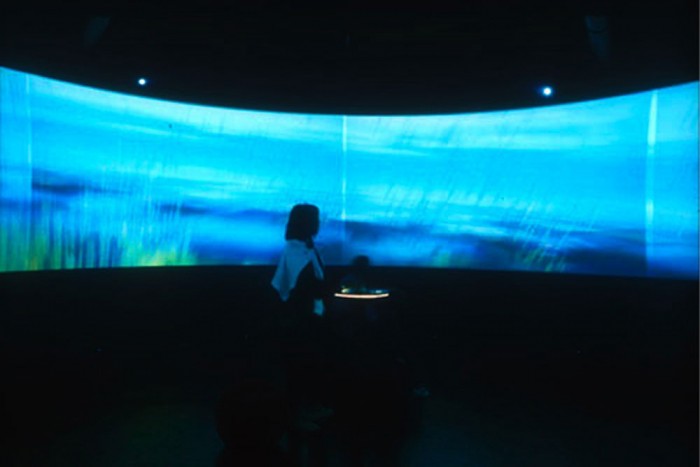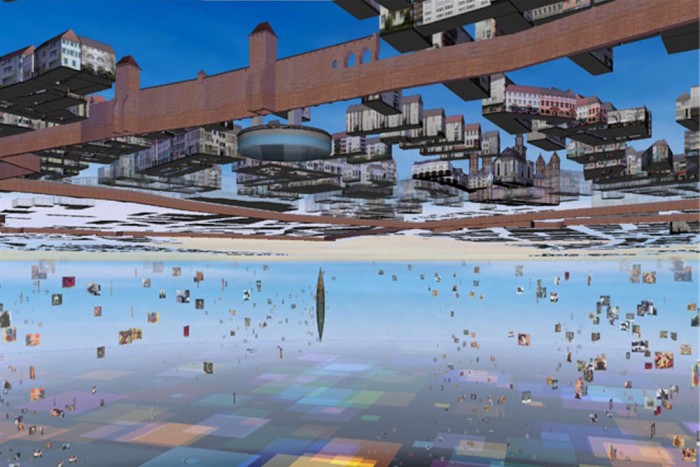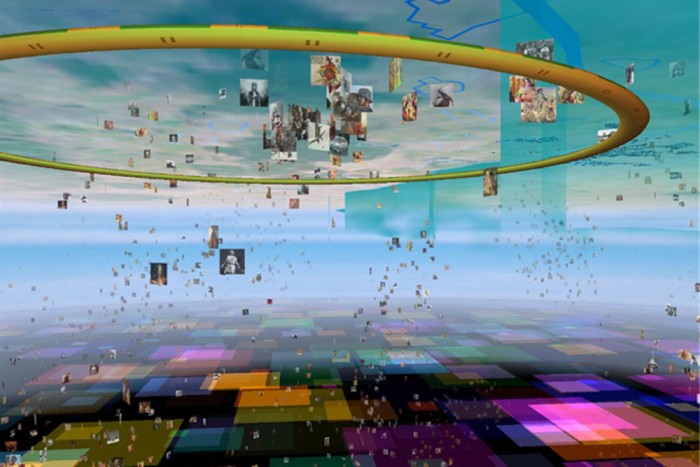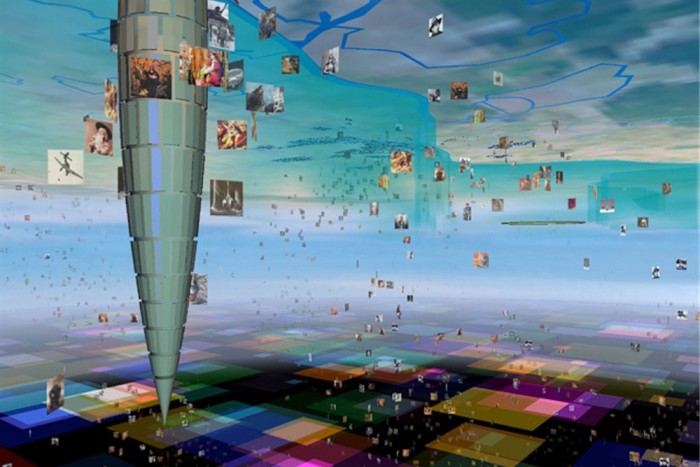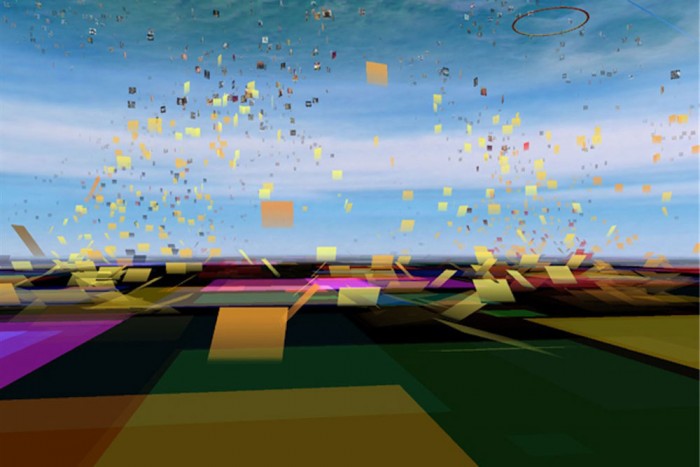installation, 2003
Original title : L’Ombre d’un doute
Shadow of a doubt is a “controversy room”: a set of points of view about science, media and politics is confronted with the audience presence and actions. The silhouettes of visitors are projected in real time on the wall, under the form of white “ghosts”; they follow them and reveal videos of interviews, TV archives and philisophical texts read by actors. The relationships and proximity between sequences are constantly modified by the interaction between the visitors in the room. Each person faces two simultaneous collective experiences: one that is talked about in the video sequences, and one that builds up continuously, improvised by the visitors, in the installation area.
People interviewed are activists and association members (François Desriaux, Christophe Gérard, Anne-Laure Morin, Christophe Noisette), philosophers and sociologists (Marc Augé, Bernard-Marie Dupont, François Ewald, Pierre Lascoumes, Isabelle Stengers), a farmer (Hervé Touraquet), civil servants and politicians (Bernard Bachelier, Alain Claëys, Martin Hirsch), and researchers (Olivier Godard, Pierre-Henri Gouyon, Guy Riba, Jacques Testart).
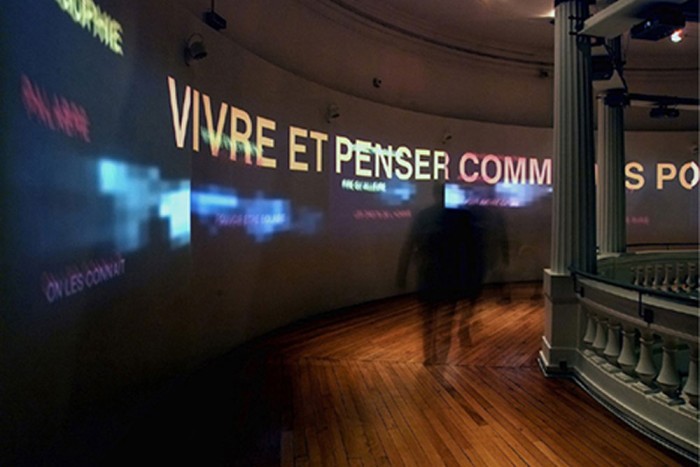
Texts excerpts that actors read are by Giorgio Agamben (Moyens sans fins), Gilles Châtelet (Vivre et penser comme des porcs), Gilles Deleuze et Félix Guattari (Qu’est-ce que la philosophie ?), Georges Didi-Huberman (Ce que nous voyons, ce qui nous regarde), Bernard Kourilsky et Geneviève Viney (Rapport au premier ministre sur le principe de précaution), Bruno Latour (Du principe de précaution au principe de bon gouvernement), Maurice Merleau-Ponty (L’oeil et l’esprit), Francis Ponge (Le Parti pris des choses), Armand Robin (La Fausse Parole), Clément Rosset (Principes de sagesse et de folie), Isabelle Stengers (Sciences et pouvoirs – la démocratie face à la technoscience), Paul Watzlawick (La Réalité de la réalité : confusion, désinformation, communication), Ludwig Wittgenstein (De la certitude).
Related to: Outside Lectures, The Life of Things, Ce qui nous regarde, Feedbackroom
